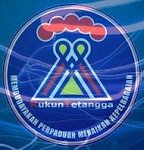
One of our closest stellar neighbors might host a habitable Earthlike world that could be detected by telescopes within the next few years, scientists say.
If so, it would be the closest Earth "twin" yet found and also the smallest extrasolar planet discovered so far.
Alpha Centauri B is a sunlike star that belongs to the triple-star system Alpha Centauri.
At a mere 4.35 light-years from Earth, the system is a popular destination for interstellar travel in science fiction, from Philip K. Dick to Star Trek.
"If there's an Earth-mass planet orbiting Alpha Centauri B, we'll find out about it within our lifetimes," said Greg Laughlin, an astrophysicist at the University of California, Santa Cruz (UCSC).
"It's going to be moved from the realm of science fiction into fact," added Laughlin, who is co-author of a new study modeling planet formation around the star.
One or More Earths
Laughlin and colleagues' computer model simulates potential planet formation around Alpha Centauri B over the course of 200 million years.
The program follows the merger of hundreds of moon-size "planet embryos" into full-fledged rocky planets.
The team ran the model eight times, and in every case a system of multiple planets with at least one Earthlike world evolved.
The model predicts that the rocky planets would be about two times the size of Earth or smaller. To date, the smallest Earthlike planet found is five times as big as Earth.
What's more, sometimes the Earth analogs in the models formed within Alpha Centauri B's habitable zone. This region around a star is where liquid water—and thus life as we know it—can exist.
Current technology has not been able to see extrasolar planets directly, and most of the more than 270 worlds spotted so far have been gas giants at least as big as Jupiter.
But the researchers think that small, rocky planets around Alpha Centauri B could be discovered using the so-called radial velocity method.
This common planet-hunting technique looks for telltale wobbles in a star's motion caused by the gravitational tug of an orbiting world.
Laughlin says Alpha Centauri B is "overwhelmingly" the best candidate for finding a second Earth using radial velocity.
"First and foremost, it's a hundred times brighter than any similarly suitable star in the sky," Laughlin told National Geographic News.
"That means you can get data a hundred times faster, or conversely, you can build a smaller, less expensive instrument for the experiment."
The Race Is On
The team estimates that a dedicated telescope could detect an Earthlike planet around Alpha Centauri B within five years.
"Actually, that's a pessimistic case," said study team member Javiera Guedes, also at UCSC. "We might find a planet in three years. In five years, we might get two or three planets."
Jack Lissauer is an extrasolar-planet expert at NASA Ames Research Center in California who was not involved in the research.
Lissauer said the team makes an excellent case for launching an intensive planet search around Alpha Centauri B. But he thinks five years might not be enough time to find an Earthlike world around the star.
"A long chain of events must all work out in order for them to do this," Lissauer said.
"The planet must be there, the star's spectrum must be stable enough to allow observations at never yet achieved precision, and they need to get first-rate special observations on a smallish telescope."
Lissauer thinks MASA's Kepler Mission, a planet-hunting project scheduled to launch next year, will be the first to detect a neighboring Earthlike planet.
Meanwhile the National Science Foundation has awarded Laughlin's team start-up funding to search for worlds within the Alpha Centauri system at the Cerro Tololo Inter-American Observatory in Chile.
khairulnazri.blogspot.com















.jpeg)

















































No comments:
Post a Comment